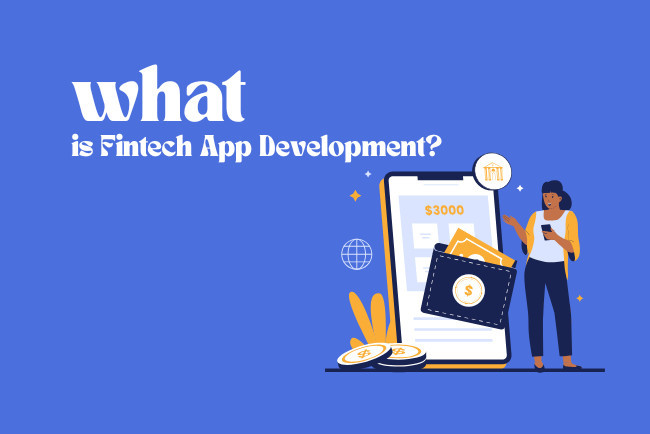views

Fintech app development is behind every tap you make—be it investing in mutual funds, buying groceries, or splitting dinner bills with friends.
Fintech app development is no longer just a trend—it’s a revolution reshaping India’s financial landscape. With a growing appetite for digital solutions and a booming smartphone population, fintech has become the bridge between traditional banking and tech-savvy convenience.
In this blog, we’ll walk you through what fintech app development is, why it matters, must-have features, current trends, and how it’s changing the game for Indian businesses and consumers alike.
What is Fintech App Development?
Fintech app development refers to the process of building mobile and web applications that provide financial services digitally. This includes apps for:
- Mobile banking
- Digital wallets (like PhonePe, Google Pay)
- Investment and trading platforms
- Loan and credit management
- Insurance tech (InsurTech)
- Personal finance tracking
- UPI-based solutions
These apps use technology to simplify financial operations for both end-users and businesses. The goal? Convenience, speed, transparency, and security—all in your palm.
Why Is Fintech App Development Booming in India?
India’s fintech system is one of the fastest-growing in the world. Here’s why:
1. A Digital-First Population
India has over 1 Billion internet users, and the number is still increasing. Thanks to affordable smartphones and cheap data plans, the masses are now online—and they’re looking for faster, easier ways to handle their money.
2. UPI and Government Push
Unified Payments Interface (UPI) has made peer-to-peer and merchant payments lightning fast. Apps like Googlepay, Paytm, and PhonePe have become everyday names. Government-backed initiatives like Digital India supported the shift.
3. Rise of Financial Inclusion
Earlier, financial services were limited to metro cities. Now, fintech apps are helping rural India get access to banking, loans, and insurance without ever visiting a branch.
4. Millennial and Gen Z Preferences
Young Indians prefer convenience over queues. With a few taps, they want to invest, save, borrow, and spend. Fintech apps are designed to fit this everyday lifestyle.
Key Features of a Successful fintech app development
Developing a fintech app isn’t just only about programming; it’s about solving financial issues smartly. Here are some essential features every fintech app should have:
1. Simple and Secure User Onboarding
Nobody likes long forms. Fintech apps must allow fast sign-up using OTP, Aadhaar, or eKYC. Biometrics and two-factor authentication (2FA) also boost trust.
2. Real-Time Notifications and Updates
From transaction alerts to loan approvals, users want to be notified instantly. Push notifications keep them informed and engaged.
3. Intuitive UI/UX Design
Design must be simple, clean, and localised. A user from Hyderabad or Kanpur should understand how to navigate the app easily.
4. AI-Powered Insights
Personalized insights, savings suggestions, and budget trackers powered by AI can enhance user experience and retention.
5. Multi-Language Support
India is diverse. Supporting multiple languages gives your app a much wider reach, especially in Tier 2 and Tier 3 cities.
6. End-to-End Data Encryption
Fintech apps deal with sensitive information. Security features like encryption, fraud detection, and secure APIs are non-negotiable.
Top Trends in Fintech App Development for 2025
As the fintech space evolves, so should the apps. Here are some of the hottest trends shaping fintech app development in 2025:
1. Open Banking APIs
With open banking, apps can fetch user data (with consent) from other banks and offer personalised services—like loans, investment advice, or insurance plans.
2. BNPL (Buy Now Pay Later)
Apps offering BNPL options are becoming popular among online shoppers. This feature gives customers the flexibility to pay in installments.
3. Voice-Enabled Transactions
Thanks to voice assistants and AI, users can now check balances, pay bills, or transfer money using voice commands in supported languages.
4. Crypto Wallet Integration
While regulations are evolving, crypto interest is growing. Some apps now offer a secure place to buy, store, or trade crypto.
5. RegTech Integration
Regulatory technology automates compliance. It helps fintech apps stay aligned with RBI norms, tax laws, and digital documentation requirements.
Examples of Fintech Use Cases in India
- A farmer in Tamil Nadu can get a crop insurance quote from an app in Tamil.
- A small business in Surat uses a digital ledger app to track customer payments.
- A college student in Delhi invests ₹500 in mutual funds through a fintech app.
- A housewife in Nagpur pays utility bills using a voice-enabled UPI app.
These examples show how fintech is breaking barriers—geographic, economic, and linguistic.
Tech Stack Used in Fintech App Development
To build a robust fintech app, developers usually rely on a mix of technologies:
- Frontend: React Native, Flutter (for seamless UI across platforms)
- Backend: Node.js, Python (for fast, scalable performance)
- Database: PostgreSQL, MongoDB (secure and reliable data storage)
- APIs: Razorpay, Paytm, Cashfree (for payments); Twilio (for OTP); ClearTax (for GST/e-filing)
- Cloud Services: AWS, Google Cloud (for storage and scalability)
- Security Tools: SSL, OAuth 2.0, encryption libraries
Each app is custom-built based on its purpose, scale, and user base.
Challenges in Fintech App Development
While fintech is a booming space, it’s not without challenges:
- Changing regulations: RBI and SEBI updates can impact app features.
- Data security: Fintech apps are prime targets for cyber threats.
- User trust: Building credibility is tough for new apps.
- UI complexity: Financial processes need simplification for the common user.
This is why businesses need not just developers—but strategic fintech app partners.
Where Does OZRIT Come In?
At OZRIT, fintech app development isn’t just about writing code—it’s about building practical, scalable financial solutions for real Indian users. Whether you’re a startup looking to launch a secure payments app or an established business expanding into digital lending, OZRIT steps in as your end-to-end tech partner.
From seamless UPI integration and wallet functionalities to RBI-compliant data security protocols, OZRIT tailors each app to meet your business goals and regulatory needs. We focus on intuitive design, fast performance, and user trust—critical factors in India’s fast-growing digital economy.
Whether your audience is urban professionals or rural entrepreneurs, OZRIT helps you deliver a fintech experience that’s reliable, inclusive, and future-ready.
Conclusion
In a country as dynamic and diverse as India, fintech app development is more than just technology—it’s empowerment. It’s about giving everyone—from urban millennials to rural entrepreneurs the tools to manage their finances smartly and securely.
If you’re a startup, business, or financial institution looking to tap into India’s fintech potential, the time is now. The right app can change how people save, spend, and grow their wealth—and in doing so, transform the nation’s financial story.






















Comments
0 comment